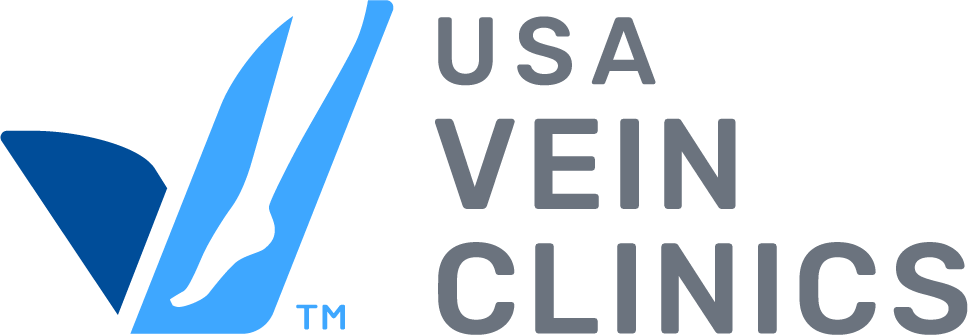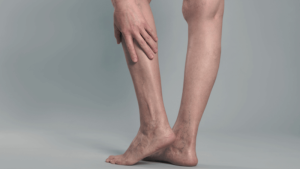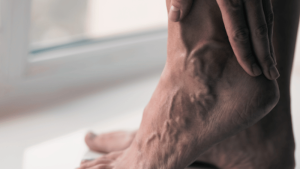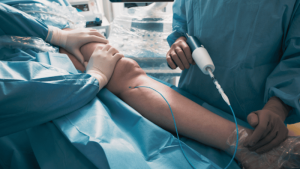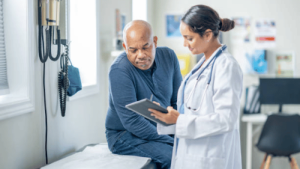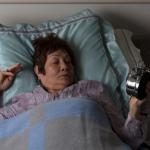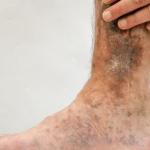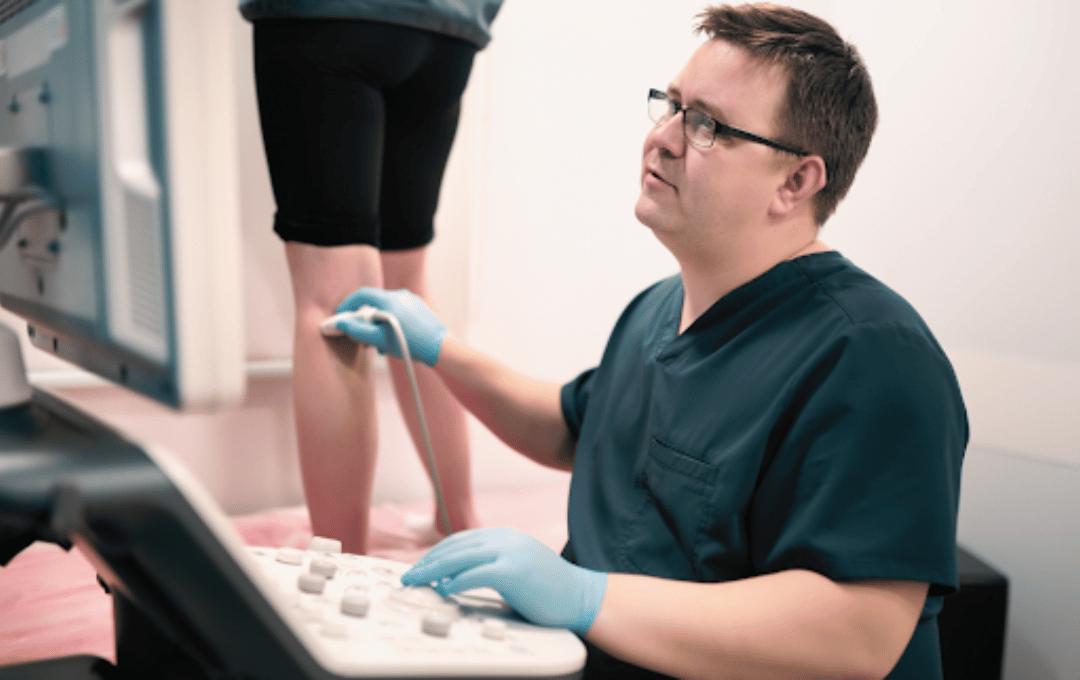
Venous reflux disease occurs when the valves in your leg veins don’t close properly, causing blood to flow backward and pool in the veins.
In healthy veins, the valves act like one-way doors, ensuring blood moves toward the heart. When these valves become damaged, blood can flow in the wrong direction, leading to painful symptoms, varicose veins, and poor circulation.
If left untreated, venous reflux can also increase the risk of more serious conditions, such as deep vein thrombosis (DVT), a blood clot that can cause life-threatening complications.
If you are concerned that you have venous reflux disease, understanding the symptoms and risk factors can help you take proactive steps to protect your vein health. Reasons you might want to consult a vein doctor include:
- Personal Assessment: A healthcare professional can personally evaluate your specific symptoms and risk factors. They can determine if your symptoms indicate venous reflux disease and recommend appropriate treatment options.
- Diagnosis Confirmation: Critical in ruling out other potential causes and ensuring appropriate treatment.
- Treatment Recommendations: Based on the severity of your condition, tailored treatment plans can be made. These plans may include lifestyle changes, compression stockings, or medical procedures.
- Prevention of Complications: Early diagnosis and treatment can help prevent the progression of venous reflux disease and reduce the risk of complications like deep vein thrombosis (DVT).
- Pain Management: If you’re experiencing pain or discomfort associated with venous reflux, a vein doctor can provide effective pain management strategies.
Understanding Venous Reflux
The veins and the arteries work together to keep your vascular system functioning. Arteries deliver oxygenated blood from the heart to the rest of the body, while veins return the depleted blood to the heart for reoxygenation.
Leg veins work against gravity, using calf muscles and heart pressure to pump blood upward. When these valves fail to close, blood pools in the veins, causing venous reflux.
When blood pools like this, fluid can leak through vein walls and accumulate in the lower extremities, leading to swelling and a feeling of heaviness or fatigue in the legs. The stretched veins can swell and bulge, a condition called varicose veins. People with venous reflux also tend to have poor circulation, which can impact skin health, leading to discoloration or open wounds, known as venous ulcers.
Venous reflux disease, also known as chronic venous insufficiency (CVI) or vein disease, is an ongoing condition. Once the damage to the veins starts, the circulatory problems worsen over time, which is why proper treatment is important for maintaining your vein health. If you notice any potential signs of venous reflux disease, you should schedule a consultation with a vein specialist. At USA Vein Clinics, we offer easy online scheduling 24/7 with the ability to verify your insurance in real-time.
What Causes Venous Reflux?
Various factors can contribute to venous reflux when vein valves become damaged, including:
- Family history: Venous reflux is often hereditary, so you may be at a higher risk if family members have varicose veins or similar symptoms.
- Lifestyle: Being inactive for long periods, either sitting or standing, reduces blood flow and increases the risk of blood clots, which can damage valves.
- Being overweight: People who are overweight and have lower limb vein disease in their lower limbs are more likely to be symptomatic due to the excess weight putting more stress on the veins.¹
- Smoking: Smoking raises blood pressure and damages the inner lining of vein walls.
Other risk factors for venous reflux include pregnancy, age, and being female.
Consult with a Vein Specialist Near You
Common Warning Signs of Venous Reflux Disease
Leg swelling, varicose veins, and spider veins are common venous reflux symptoms. Other signs that can indicate damage to leg veins and venous reflux include the following:
- Edema—swelling of the ankles or legs
- Leg cramps or tight sensations in your calves
- Pain that eases when you raise your legs but gets worse when you stand up
- Throbbing, aching, itching, or a heavy sensation in your legs
- Weak legs
- Changes in skin color or thickness – particularly near your ankles or legs
- Leg ulcers
If you are concerned you may have symptoms related to venous reflux disease, take our informative vein symptom quiz below for additional insights.
When to See a Vein Doctor About Venous Reflux Symptoms
Early detection and treatment of venous reflux can significantly improve your quality of life. If you notice common signs such as enlarged leg veins, leg pain, or swelling, don’t hesitate to consult a vein doctor.
They can provide a comprehensive evaluation and recommend appropriate treatment options, such as minimally invasive procedures, to alleviate symptoms and prevent the condition from progressing further.
What Is the Best Treatment for Venous Reflux in the Legs?
There are several minimally invasive treatments for venous reflux disease. These procedures can address vein damage, promote better circulation, and help alleviate reflux symptoms.
Endovenous Laser Therapy (EVLT)
EVLT is an FDA-approved procedure that eliminates damaged veins using laser treatment. It’s effective even in advanced cases of venous reflux.
Sclerotherapy
Sclerotherapy involves injecting a medical solution into the vein, which causes the blood to thicken and the vein to collapse. Visual sclerotherapy is often used for spider veins, and ultrasound-guided sclerotherapy (UGSC) is effective for varicose veins.
ClariVein®
This non-surgical vein treatment delivers a special solution to damaged veins using a tiny rotating fiber. ClariVein is a non-thermal treatment for venous reflux.
Varithena Vein Treatment
Varithena eliminates diseased veins with FDA-approved medical foam. This short, outpatient treatment alleviates leg pain, heaviness, and other symptoms of venous reflux.
VenaSeal™
This venous reflux disease treatment closes off diseased veins using a specially formulated medical adhesive.
Radiofrequency Ablation (RFA)
RFA for venous reflux uses radiofrequency energy to seal off damaged veins, thus rerouting blood flow to healthy veins and helping to relieve symptoms.
How To Pick the Best Vein Center for Treatment?
Choosing the right vein center is crucial for optimal results. Here, at USA Vein Clinics, our vein treatment centers are focused on helping patients get relief from venous reflux disease.
Early detection and treatment of vein disease can significantly improve your quality of life. USA Vein Clinics offers non-surgical treatments in our outpatient vein treatment centers that help promote blood circulation and prevent future vein issues.
Our experienced vein doctors at USA Vein Clinics specialize in diagnosing and treating a wide range of vein conditions, including varicose veins, spider veins, and deep vein thrombosis. With advanced training and years of experience, our physicians are committed to providing personalized care and optimal outcomes.
If you have symptoms, possess risk factors, or are concerned about your vein health, call 888.768.3467 to schedule an appointment at a location near you or book your appointment online using the link below.
Frequently Asked Questions
How is venous insufficiency different from arterial insufficiency?
Venous insufficiency, or venous reflux, occurs when blood can’t flow back to the heart because vein valves are damaged. Arterial insufficiency occurs when arteries become blocked by plaque or fatty deposits, inhibiting blood flow through the arteries.
How to manage venous reflux disease?
It’s possible to temporarily relieve symptoms by avoiding a sedentary lifestyle, wearing compression stockings, and elevating your legs. However, venous reflux disease requires long-term relief treatment, so it’s important to consult a vein specialist if you have any symptoms.
What happens if venous reflux is not treated?
If left untreated, venous reflux can cause painful and uncomfortable symptoms in the legs that worsen over time. This condition also increases the risk of serious complications, such as venous ulcers, a weakened immune system, or developing a dangerous blood clot.
Sources
- Huw O Davies, et al., “Obesity and lower limb venous disease – The epidemic of phlebesity,” Phlebology, https://pubmed.ncbi.nlm.nih.gov/27178403/
